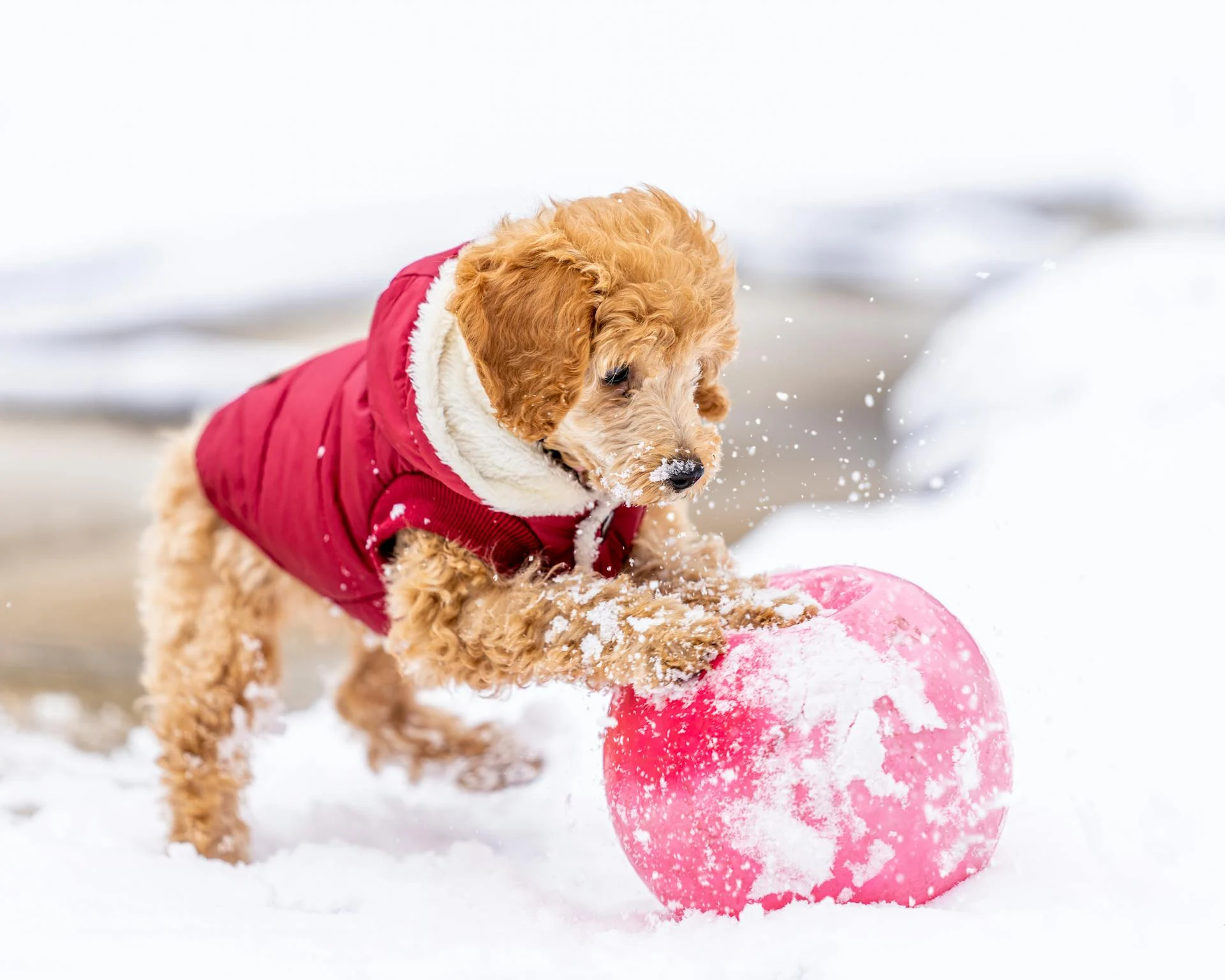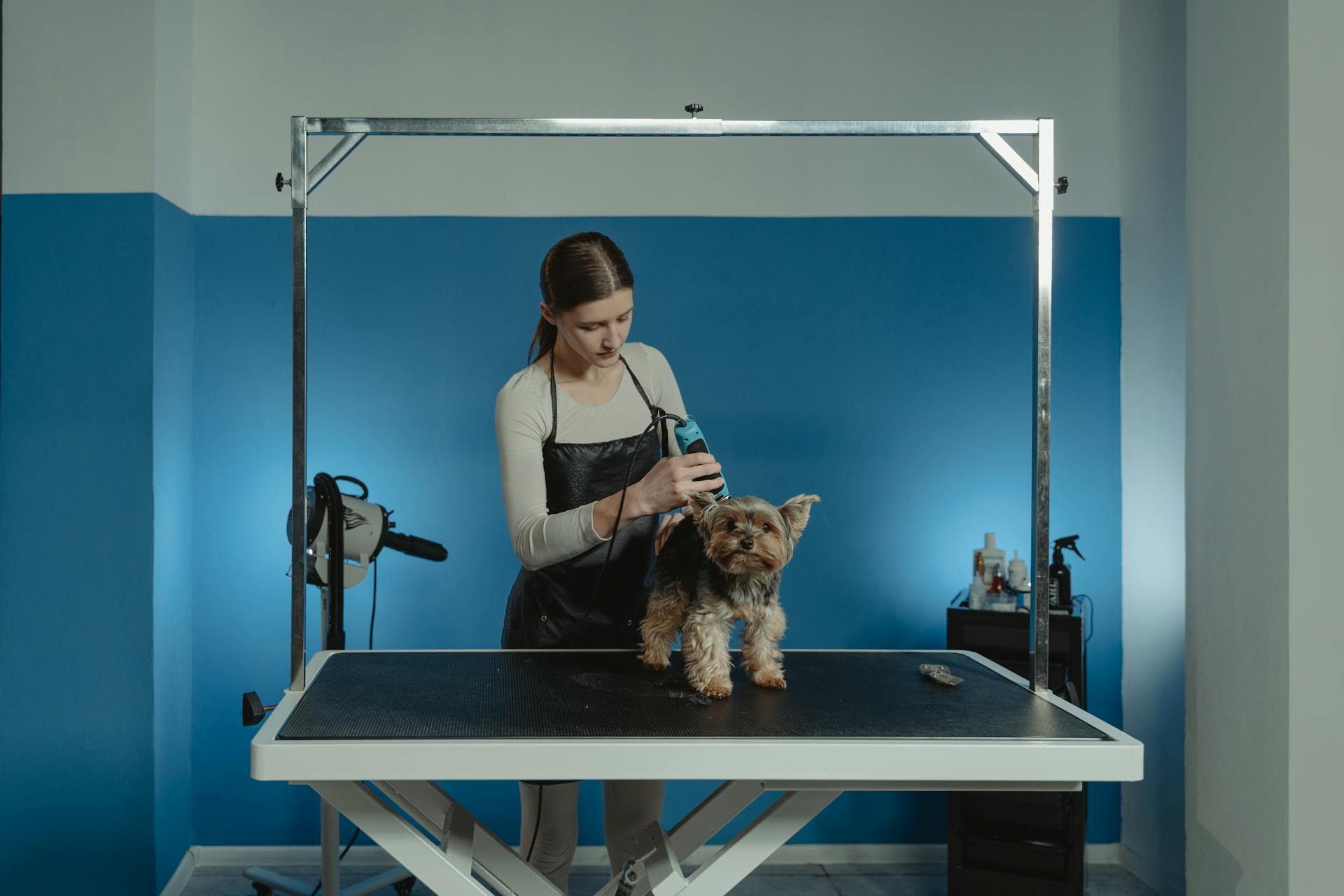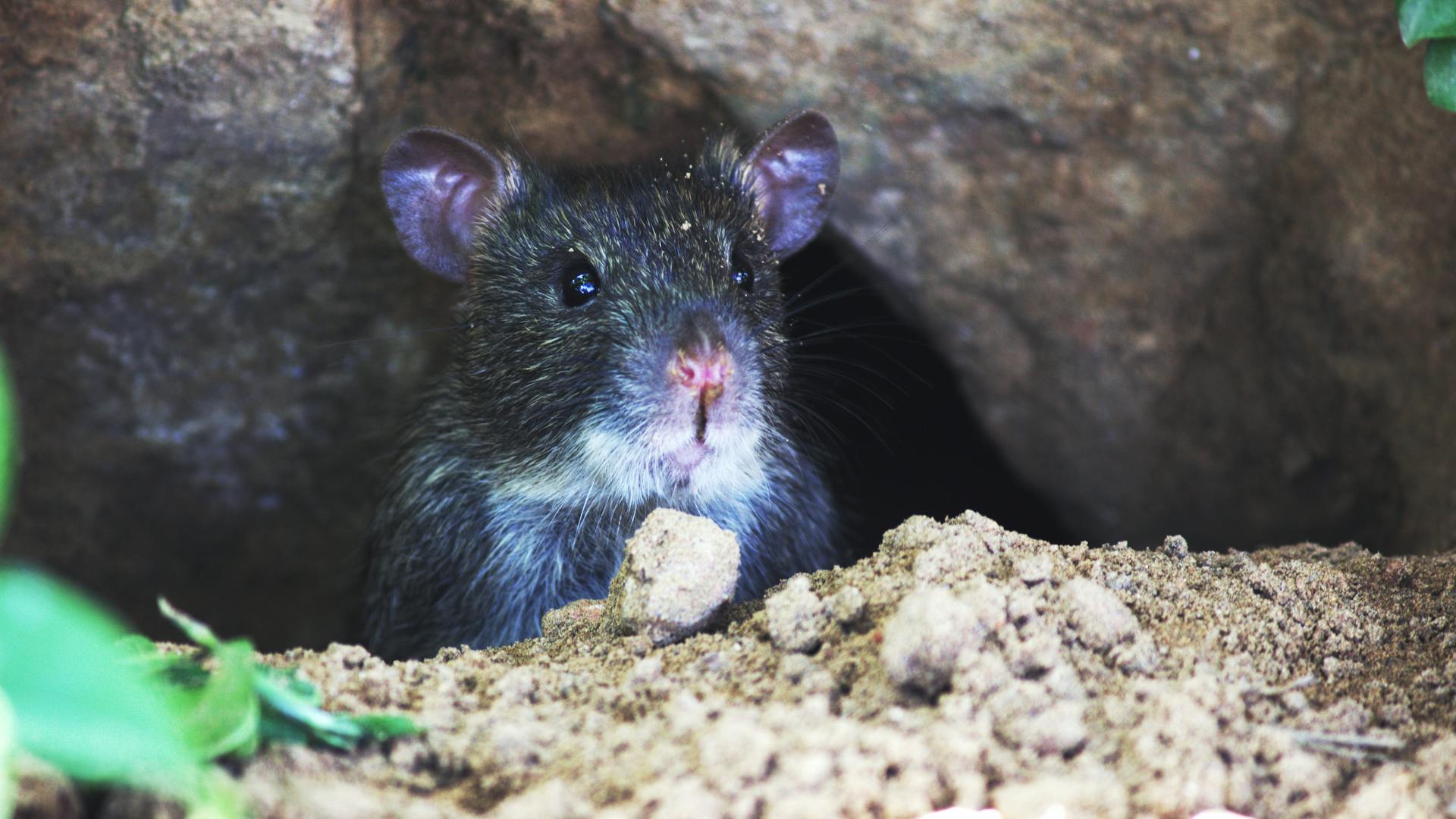
The Red Rat Terrier is a small, energetic dog breed that makes a wonderful companion for active families. They typically weigh between 10-25 pounds and stand 10-15 inches tall at the shoulder.
Their short coats require minimal grooming, but they do need regular exercise to stay happy and healthy. A daily walk and some playtime should do the trick.
Red Rat Terriers are known for their intelligence and trainability, making them a great choice for first-time dog owners. They are also relatively low-maintenance when it comes to feeding, as they are happy with a moderate amount of food each day.
Related reading: Boxer Dogs Facts
Breed Overview
The red rat terrier is a versatile and energetic breed that originated in the United States as a working dog. They excel in tasks such as hunting small game and pest control, and are also excellent farm dogs.
Red rat terriers are highly intelligent and trainable, making them quick learners and adaptable to various training tasks and dog sports. They are also known for their loyalty and affection towards their families, forming strong bonds with their owners.
Worth a look: Dogs Breeds That Start with B
If you're considering bringing a red rat terrier into your family, be prepared for their high energy level and need for regular exercise. A 5- or 6-foot fence is recommended to prevent escape attempts, and they should be kept on a leash in open spaces to avoid chasing small animals.
Here are some key characteristics of the red rat terrier breed:
Red rat terriers are also prone to certain genetic conditions, so regular veterinary check-ups are essential to ensure their health and longevity. With proper care, they can live up to 12-18 years, making them a long-term companion for active families.
Health and Care
A Red Rat Terrier's life expectancy is 12-18 years, making them a long-term companion. They are generally a healthy breed, but like all dogs, they can be prone to certain health issues.
Rat Terriers are susceptible to hip dysplasia, a condition that can cause pain and cartilage loss if not addressed. Patellar luxation, where the kneecap dislocates, is another potential issue. Legg-Calve-Perthes disease, which affects the hip joint, and heart disease, which can be common in senior Rat Terriers, are also concerns. Eye disease, specifically primary lens luxation, can lead to vision loss.
Here are some key health issues to watch out for:
- Hip Dysplasia
- Patellar Luxation
- Legg-Calve-Perthes Disease
- Heart Disease
- Eye Disease (Primary Lens Luxation)
Health

Rat Terriers are known for their long lifespan, living up to 12-18 years with proper care. They're a generally healthy breed, but like all dogs, they can be prone to certain health issues.
Hip Dysplasia is a condition that can occur in Rat Terriers, causing pain and cartilage loss in the hip joints. If left untreated, it can lead to scar tissue and mobility problems.
Rat Terriers are also susceptible to Patellar Luxation, which causes the kneecap to dislocate and can result in pain and loss of function. Treatment options include joint supplements, pain medication, and surgery in severe cases.
Legg-Calve-Perthes Disease can affect Rat Terriers, causing the top of the femur bone to deteriorate and become painful. Surgery is often the treatment of choice for this condition.
Heart disease can be common in older Rat Terriers, so it's essential to monitor their heart health with regular check-ups. Your veterinarian may refer you to a veterinary cardiologist if they detect a heart murmur.

Eye disease is another potential issue for Rat Terriers, with primary lens luxation being a particular concern. This can lead to teary, red, and cloudy-looking eyes, and eventually, blindness.
Here are some potential health issues to watch out for in Rat Terriers:
- Hip Dysplasia: loose hip joints, pain, cartilage loss, and scar tissue
- Patellar Luxation: kneecap dislocation, pain, and loss of function
- Legg-Calve-Perthes Disease: deteriorating femur bone, pain, and surgery
- Heart Disease: heart problems, heart murmurs, and echocardiograms
- Eye Disease: primary lens luxation, teary, red, and cloudy eyes, and blindness
Care
Caring for a Rat Terrier is a big responsibility, but with the right approach, it can be a joy. They are a high-energy breed that requires daily exercise and mental stimulation to prevent boredom and destructive behavior.
Rat Terriers are intelligent dogs that need consistent training and socialization from an early age. This will help them develop good manners and prevent unwanted behaviors like chewing or digging.
To keep your Rat Terrier's coat looking its best, brush them weekly with a soft brush or rubber mitt to remove loose hair and debris. This will also help reduce shedding, which can be heaviest in the spring and fall.
Their short, dense coat is relatively low-maintenance, but they do shed mildly throughout the year. They only need a bath every 4-6 weeks, unless they get dirty or develop an unpleasant odor.
Explore further: Dog Breeds That Don't Need Grooming

Rat Terriers are prone to dental disease, so it's essential to brush their teeth daily to prevent tartar buildup and bacteria. Annual professional tooth cleanings with your veterinarian are also a must.
To keep your Rat Terrier's nails healthy, trim them every 4-6 weeks to prevent painful tears and other problems. You can also use a nail grinder or Dremel to smooth out the edges.
Here's a quick rundown of Rat Terrier grooming needs:
- Brushing: Weekly brushing with a soft brush or rubber mitt
- Bathing: Every 4-6 weeks, or as needed
- Dental care: Daily brushing and annual professional tooth cleanings
- Nail trimming: Every 4-6 weeks to prevent overgrowth
- Ear cleaning: Weekly checks for debris and redness
By following these simple grooming tips, you can help keep your Rat Terrier happy, healthy, and looking their best. Remember, grooming is an essential part of their overall care, and it's a great way to bond with your furry friend.
Feeding
Feeding your Rat Terrier is an important part of their overall health and care. A balanced diet of high-quality dog food is best, and you should opt for commercially available food approved by the Association of American Feed Control Officials (AAFCO).
For another approach, see: Best Food for Rhodesian Ridgeback

To determine how much food your Rat Terrier needs, consider their size, age, build, metabolism, and activity level. A highly active dog will need more food than a couch potato dog. For example, a Rat Terrier weighing less than 10 pounds needs 1/4 to 1/2 cup of food per day, while a 30-40 pound Rat Terrier needs 1.5 to 2 cups per day.
You should feed your Rat Terrier twice a day, rather than leaving food out all the time, to prevent overeating and obesity. A good rule of thumb is to measure their food and adjust as needed. If you're unsure whether your Rat Terrier is overweight, give them the eye test and the hands-on test: you should be able to see a waist and feel but not see their ribs without pressing hard.
Here's a rough guide to help you estimate your Rat Terrier's daily food needs:
Regular ear checks are also important to prevent infections. Check your Rat Terrier's ears weekly for redness or a bad odor, and wipe them out with a cotton ball dampened with gentle, pH-balanced ear cleaner.
Training and Behavior
Red Rat Terriers are highly intelligent and can become destructive when bored or unstimulated, so training and obedience are crucial for proper behavior and socialization.
Training should be interesting and engaging for your Red Rat Terrier, with games, rewards, and positive reinforcement to keep them motivated.
Rat Terriers are bright, motivated, and fast learners, making them easy to train with basic commands like sit, stay, and come.
Training doesn't end when they grow beyond puppyhood; they need mental stimulation and socialization throughout their lives.
Red Rat Terriers love to please and respond well to rewards-based training, praise, and clear boundaries.
They can be wary of strangers and may not warm up to them immediately, so socialization is essential to prevent aggression.
Regular exercise is non-negotiable for Red Rat Terriers, but they don't need to be kept moving at all times; they just need to feel engaged with their family.
Red Rat Terriers are persistent and tenacious problem-solvers, but they can also be stubborn, so consistent rules and boundaries are necessary.
For more insights, see: How Young Can Male Dogs Breed
With early socialization, Red Rat Terriers can get along with everyone, including children, other dogs, and cats, but supervision is still recommended.
They can be good watchdogs, but excessive barking can be a problem, so there are options to help reduce their barking.
Overall, Red Rat Terriers are devoted to their people and love to be included, so don't leave them alone for too long or they will pine for you.
If this caught your attention, see: Rat Terrier Barking
Exercise
Red rat terriers have high energy levels and require regular exercise to stay happy and healthy. They need at least an hour of exercise per day, ideally in a fenced-in space where they can run around.
You should expect to spend at least 30 minutes on daily exercise with your red rat terrier, which can be a long walk or a fun play session. If you're an active person, your rat terrier will love to join you on your adventures.
Rat terriers are fast runners and high jumpers, so make sure the fence around your yard is at least 5 to 6 feet high to prevent them from escaping. You can also play indoor games like fetch or hide-and-seek if it's raining or snowing outside.
If you don't get their daily exercise, your rat terrier might get destructive and start chewing shoes or barking when bored. To prevent this, try to incorporate mental stimulation into their playtime, like tugging on a rope while you watch TV.
Some fun activities for red rat terriers include agility, obedience training, and swimming. They also enjoy playing with toys, cuddling on the couch, and being with their people. Here are some more ideas:
- Agility
- Obedience training
- Flyball
- Scent work/tracking
- Swimming
- Jogging
- Hiking
- Playing with toys
- Cuddling on the couch
- Being with their people
Breed History and Organizations
The Rat Terrier breed has a rich history that spans over a century. The breed was created by combining traits of the Fox Terrier, Bull Terrier, Manchester Terrier, and Old English White Terrier, among others.
Farmers in the Midwest bred Rat Terriers with Whippets and Italian Greyhounds to create a more versatile and quick-footed dog. This combination proved to be effective in controlling the jackrabbit problem.
The Rat Terrier's strong sense of smell came from the Beagle, while its speed came from the Whippet. The breed's ability to catch prey and pests made it a valuable companion on farms.
Rat Terriers were originally bred to catch rats and other pests on farms, and they earned their name through their expertise in this area. They were specifically bred for this task and were the most common farm dog in the US in the 1910s and 1920s.
Rat Terriers were also known for their ability to make great watchdogs and playmates for children. However, the breed's prevalence waned when poison became the primary method for rodent control.
Reputable breeders are committed to breeding healthy, well-socialized puppies that will make great companions. They will screen their breeding stock for health problems and provide you with lifetime support.
Backyard breeders, on the other hand, are more interested in making a profit than in producing healthy, well-adjusted dogs. They may not screen their breeding stock for health problems, and they may not socialize their puppies properly.
If you're looking to bring a Rat Terrier into your life, be sure to find a reputable breeder. You can find a list of reputable Rat Terrier breeders on the AKC's website.
Consider reading: Healthy Bull Terrier
History
The Rat Terrier breed has a rich history that dates back to the early 20th century. It was created by combining traits of the fox terrier, bull terrier, Manchester terrier, and old English white terrier.
Farmers originally bred Rat Terriers to catch prey and hunt pests, such as rats, on farms. This is how they got their name. Rat Terriers were specifically bred for this task and were the most common farm dog in the US in the 1910s and 1920s.
The breed was developed by adding new strains to the mix, including Whippets and Italian Greyhounds for speed and Beagles for their superior hunting skills. Farmers used different combinations of breeds to land on the traits they required for the job.
The Rat Terrier breed's popularity waned in the 1950s when poison became the primary method for rodent control. However, a few dedicated breeders sustained its existence until a resurgence in the late 1970s.
In 2006, the Rat Terrier was officially recognized by the American Kennel Club (AKC). You can find a list of reputable Rat Terrier breeders on the AKC's website.
Expand your knowledge: English Cocker Spaniel Field Bred
Breed Organizations
Reputable dog breeders are committed to breeding healthy, well-socialized puppies that will make great companions. They screen their breeding stock for health problems and socialize their puppies from a young age.
Reputable breeders also provide lifetime support to their puppy owners. Backyard breeders, on the other hand, are more interested in making a profit than in producing healthy, well-adjusted dogs.
Puppies from backyard breeders are more likely to have both health and behavioral issues.
Intriguing read: How to Breed Yorkshire Terriers
Adoption and Purchase
Rat terriers may be relatively easy to find in local animal shelters, or you can search online using websites like Petfinder.com to find shelters in your area by breed, size, sex, and more.
Check your local animal shelters first, as you might be surprised to find a rat terrier or rat terrier mix waiting for a forever home.
If you can't find a rat terrier in a shelter, look for local rescue organizations that specialize in this breed.
If you decide to buy a rat terrier from a breeder, make sure to research them thoroughly to ensure you're working with an ethical and responsible breeder.
A different take: German Shepherd Dogs 101 Animal Planet
Prospective Owners
Choosing the right breed is a crucial step in becoming a responsible dog owner. With so many breeds to choose from, it's essential to select one that fits your lifestyle and living situation.
If you're new to dog ownership, you might be wondering why get a dog in the first place? The reasons are numerous, but some of the most significant benefits include companionship, improved physical and mental health, and a sense of purpose.
Finding a responsible breeder is vital to ensuring you're getting a healthy puppy from a reputable source. Look for breeders who are transparent about the puppy's ancestry, health clearances, and temperament.
Getting started in dog sports can be a fun and rewarding experience for both you and your dog. Whether it's agility, obedience, or fetch, engaging in dog sports can help strengthen your bond and provide exercise for your dog.
Puppies require a lot of attention and care, so it's essential to be prepared for the challenges that come with bringing a new puppy home. From feeding and training to socialization and playtime, there's a lot to consider when welcoming a new puppy into your family.
Here are some key things to consider when bringing a new puppy home:
- Feeding and nutrition: Puppies need a balanced diet that meets their nutritional needs.
- Training and socialization: Puppies need early socialization and training to develop good behavior and manners.
- Exercise and playtime: Puppies need regular exercise and playtime to stay happy and healthy.
- Veterinary care: Puppies need regular veterinary check-ups and vaccinations to stay healthy.
Adopt or Buy
You're considering bringing a Rat Terrier into your life, and that's a great decision! They're a wonderful breed, and with the right care, they'll make amazing companions.
If you're looking to adopt a Rat Terrier, you're in luck - they're often easy to find in local shelters. Websites like Petfinder.com make it simple to search for shelters in your area by breed, size, and more.
Local animal shelters are a great place to start your search. You might even find a Rat Terrier mix that's just as lovable as a purebred.
If you're having trouble finding a Rat Terrier in a shelter, consider reaching out to local rescue organizations. They often have a wealth of knowledge and can point you in the right direction.
If you do decide to buy a Rat Terrier from a breeder, make sure to do your research. Ask plenty of questions, like "Where are the puppies kept?" and "How many litters do you produce per year?" This will help you ensure you're working with an ethical, responsible breeder.
Here are some reputable Rat Terrier rescue groups to consider:
- American Rat Terrier Rescue
- Ratbone Rescues
Frequently Asked Questions
What two dogs make a Rat Terrier?
A Rat Terrier is a mix of various breeds, primarily consisting of Bull Terrier and Manchester Terrier ancestry. Its diverse heritage is a result of farmers combining different breeds to create a unique hunting companion.
How rare are Rat Terriers?
Rat Terriers are considered a rare breed by the UKC and AKC, with a limited population. Despite their rarity, they remain a popular choice for families and pest control.
Are Rat Terriers dog friendly?
Rat Terriers generally get along well with other dogs, especially those of similar or larger size, but require early socialization and training. They can be challenging to manage off-leash due to their strong prey drive.
Featured Images: pexels.com


